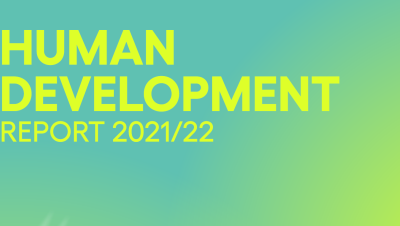A concept is always broader than any of its proposed measures. Any suggested measure for any concept cannot fully capture the richness, the breadth and the depth of the concept itself. This is true of the notion of human development as well. In principle human choices can be infinite and change over time.
In the context of the above, there are two types of measures for human development – breadth measures and focus measures. The breadth measures, which may be termed Human Development Accounting, encompass all indicators related to human development assessments and sometimes can be represented by a dashboard. The focus measures, which are basically composite indices, concentrate on some basic dimensions of human development.
Both types of measures have their respective values and limitations. Human Development Accounting is required to make a comprehensive assessment of human development conditions in any society, but it does not provide a single number to synthesize the state of affairs in some basic dimensions. Composite indices, on the other hand, provide a single number, but cannot provide a comprehensive picture of the state of human development in any situation. Focus measures are extremely good for advocacy, for initiating healthy competition among societies and for raising awareness, but not in providing a comprehensive picture. Breadth measures, on the other hand, are good for painting a comprehensive picture, but not for providing a single number for drawing attention.
It is in these perspectives that a composite measure like the Human Development Index (HDI) was constructed. Three things prompted the Human Development Report Office to come up with such a measure:
- First, given that human choices are infinite, it was also recognized that at all levels of development, the three essential ones are for people to lead a long and healthy life, to acquire knowledge and to have access to resources needed for a decent standard of living. If these essential choices are not available, many other opportunities remain inaccessible. The HDI captures these basic dimensions of human development.
- Second, if only breadth measures of human development are presented, people will look respectfully at that dashboard, but then will revert to GDP per capita for a single measure of development. The HDI would change that outlook.
- Third, for measuring human well-being, one needs as vulgar a measure as income per capita, but not as narrow a measure like income per capita which is blind to broader aspects of human lives. The HDI provides that broader measure.
Five observations are quite pertinent about the HDI:
- First, the HDI is not a comprehensive measure of human development. It just focuses on the basic dimensions of human development and does not take into account a number of other important dimensions of human development.
- Second, it is composed of long-term human development outcomes. Thus it does not reflect the input efforts in terms of policies nor can it measure short-term human development achievements.
- Third, it shares all the limitations of composite measures. But it is important to keep it simple with minimum variables to ensure its acceptability, understanding and predictability.
- Fourth, the HDI is an average measure and thus masks a series of disparities and inequalities within countries. Disaggregation of the HDI in terms of gender, regions, races and ethnic groups can unmask the HDI and can be and has been used widely for policy formulation.
- Fifth, income enters into the HDI not in its own right, but as a proxy for resources needed to have a decent standard of living. The issue with regard to income is how it is transformed into the health and education dimensions of the HDI. Thus between income and the other two dimensions of the HDI, the issue is that of transformation, and not of substitution.
The HDI thus has a limited scope. It cannot provide a complete picture of human development in any situation. It has to be supplemented with other useful indicators in order to get a comprehensive view. Thus it is human development accounting, not the HDI, which can portray the complete picture.
If a metaphor is used, human development accounting represents a house and the HDI is the door to the house. One should not mistake the door to be the house and one should not stop at the door, rather one should enter the house.
Selim Jahan is the Director of the Human Development Report Office
Photo credit:


